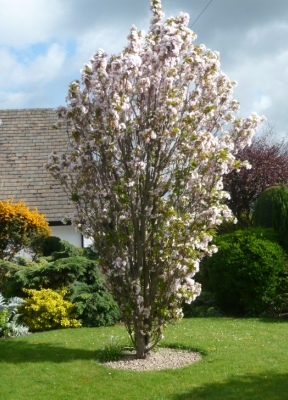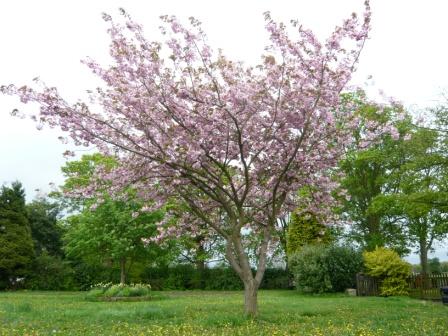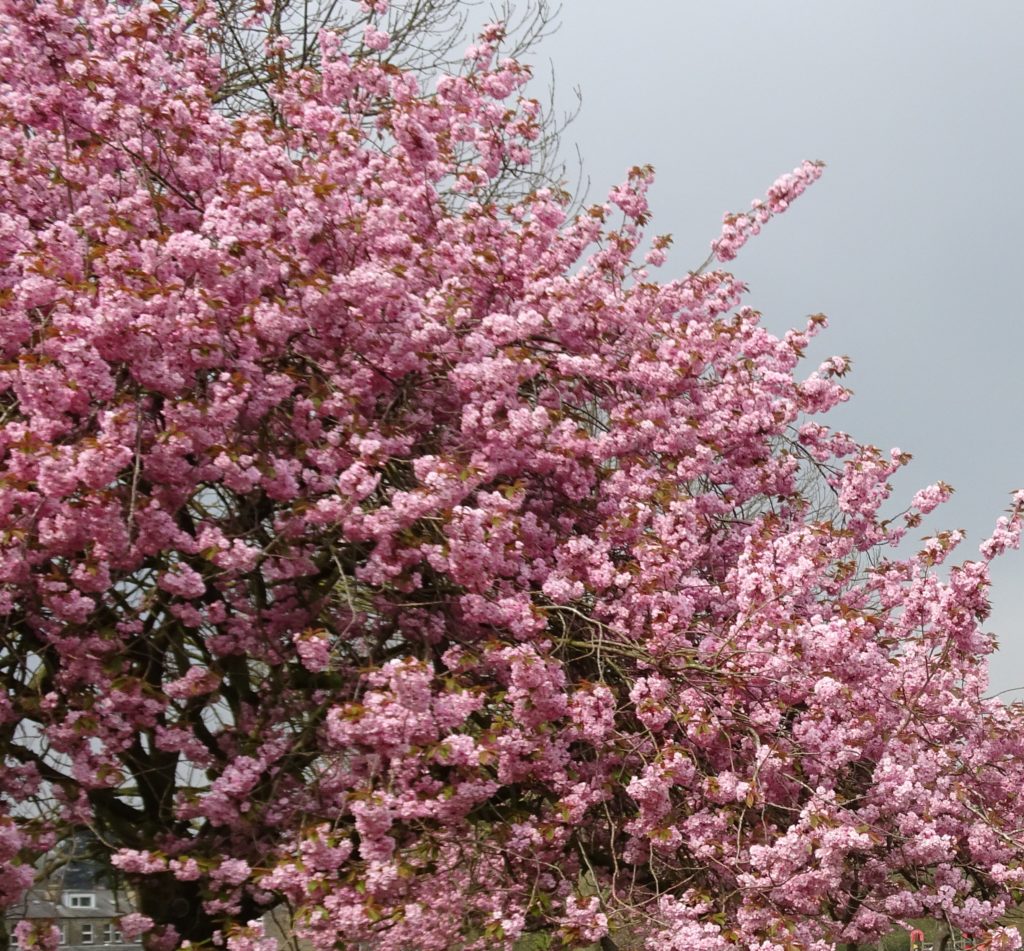Prunus & Flowering Cherry Facts

Picnic in the shade of Cherry Trees
Botanic Facts
- The following fruit are all Prunus species; plums, cherries, peaches, nectarines, apricots, and almonds. They are part of a family of 430+ species
- Blossoms usually have five petals and five sepals
- Fruit are categorized stone fruits or scientifically as drupes. Freestone fruits have flesh that pulls away easily from the pit, Cling-stone fruits have pulp that sticks more firmly to the pit.
- Prunus are broadleaf deciduous trees and are some of the first species to flower in spring.

Fastigiate Cherry with branches almost parallel to the trunk
Ornamental Facts
- Cherry Blossom trees, are renowned for their magnificent blossoms that cover the branches in many different shades and forms.
- Some varieties offer stunning autumn colour, purple foliage or glossy bark.
- Picnic under blossoming Cherry trees to enjoy their beauty whilst it lasts.
- It is said that such picnics were ‘… originally reserved for the elite persons within society’ as shown above in the spa town of Ilkley.
- USA and Germany even have their own versions of the Japanese Hanami cherry blossom festivals
- More botanic information Mume is another prunus species of Chinese or Japanese plum
‘Hybridization is an important evolutionary process that results in increased plant diversity. Flowering Prunus includes popular cherry species that are appreciated worldwide for their flowers. The ornamental characteristics were acquired both naturally and through artificially hybridizing species with heterozygous genomes. Therefore, the genome of hybrid flowering Prunus presents important challenges both in plant genomics and evolutionary biology.’ et al


Cherry blossom time strikes again in this public park. The colour is saturated until the rain comes and the ground is then saturated by fallen petals.
Cherry Picking Some Points of Note
- I was taken with the grouping of these trees that were planted close together many years ago. The combined fluorescence is amplified in this park land setting. Still we can consider groups of various plants in our own gardens to good effect.
- The probable shape of trees in bloom should be considered when planting along with the likely spread and height. This triangular canopy of flowering cherry’s could be thought of as a flattened cone.
- For more growing shapes of flowering cherry trees read GTips
- Varieties of flowering cherry trees can be found to suit most gardens but the expanse of green grass in these photographs adds contrast.
